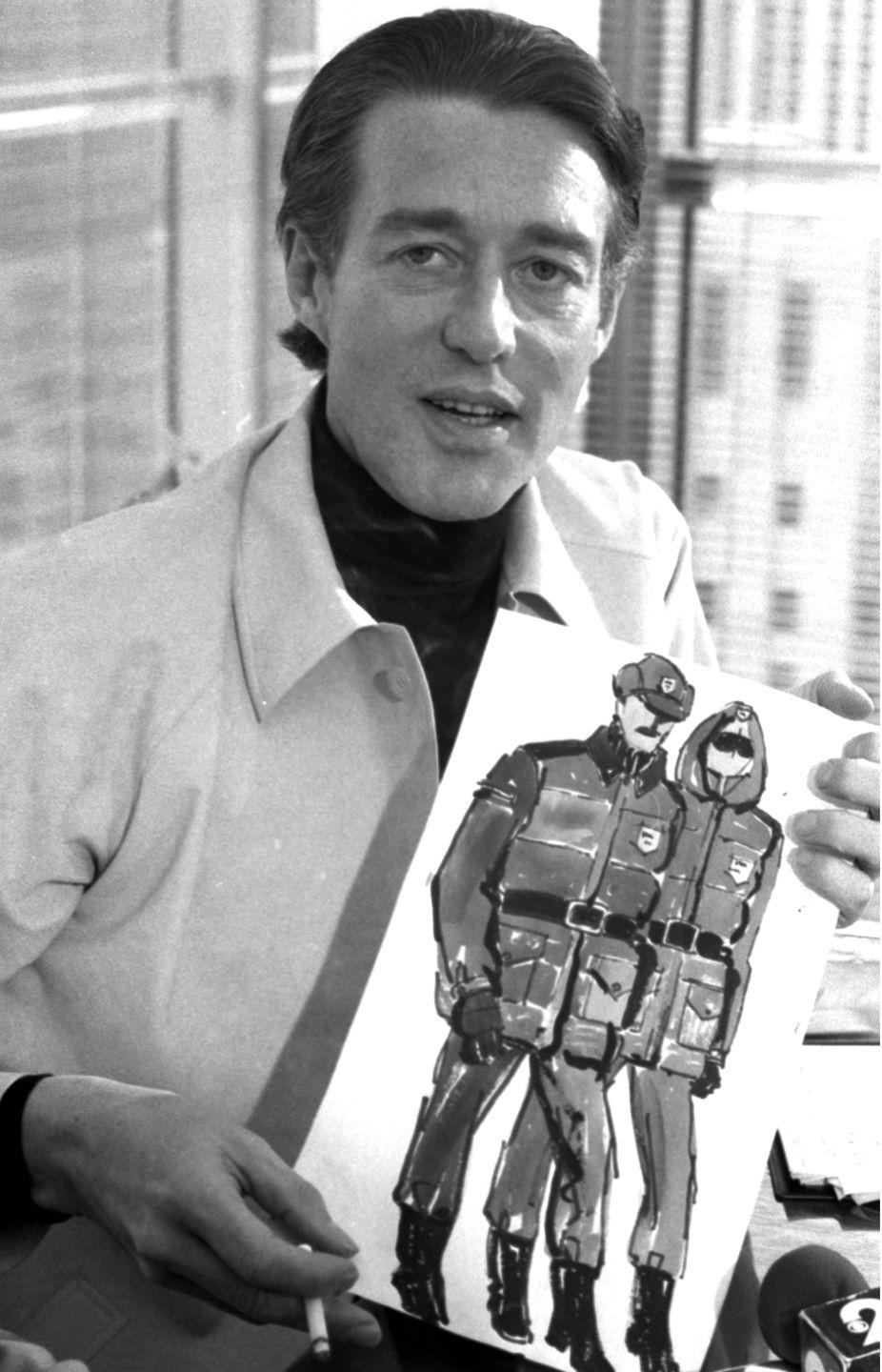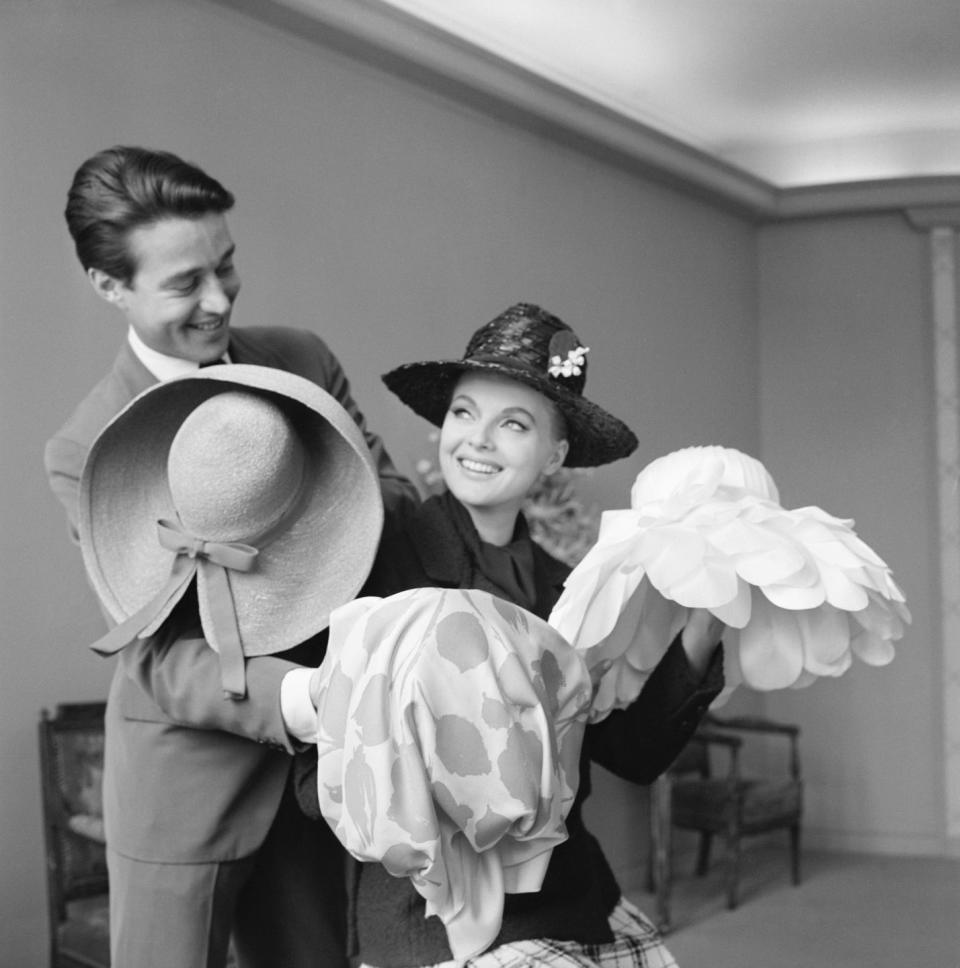The True Story Behind Netflix’s Wild Drug-and Sex-Fueled Miniseries 'Halston'

- Oops!Something went wrong.Please try again later.
Roy Halston Frowick, the fashion designer who worked with Jacqueline Kennedy and rolled with Andy Warhol—and is known by his self-eponymous brand, simply, “Halston”—comes to biopic life on Netflix in Halston. Ewan McGregor plays the titular icon in the cautionary downfall limited series, which follows Halston up until his untimely death in 1990. Along the way: sex, cocaine, the word “Halston” almost every minute, and the technicolor dance palette we’ve come to expect from a Ryan Murphy joint which, here, can only really be described as unironic chic.
The series was apparently so bombastic that Halston’s family called the production “an inaccurate, fictionalized account,” though they didn’t go into details. Regardless of the specifics, however, Halston’s life of excess wasn’t all fiction. While viewers ought to take the Netflix series with a pinch of salt, there are some very real, dramatic, and tragic notes the series strikes.
One of these is Halston’s drug habit. The series depicts Halston abusing cocaine, which, at least in the series, is concomitant with Halston’s professional downfall. McGregor told CBS News in an interview that Halston’s addiction was something he knew himself. The actor has been sober now for two decades, following alcohol abuse as a younger man. He explained what the habit must have been like for Halston, and how it must have tormented him during the end of his career.
“I understand it, addiction. And I'm not judgmental about it, you know? Because I've walked that path for so many years, and it's very cunning and you will absolutely live in denial, you know? People can't see it. So, there's Halston going to Studio 54 every night and doing coke and his business is in terrible trouble. And yet he still goes, 'I don't have a problem. I could stop any time I like, you know?' I understand that.”
McGregor said that, as with most roles, Halston terrified him. “At the beginning of every project, you're very nervous,” McGregor explained.
While some were skeptical the rugged Scotsman could pull off Halston, McGregor did what he does best, nerves or not. When those who knew Halston first watched screeners, they couldn’t believe what they were seeing; it felt as if they were really watching Halston. “The way he pivots with the cigarette dangling between his two fingers and says ‘Bah-len-ciah-aaaaa-gah’, so it’s almost musical, with the ‘B’ floating on air, it was so perfect,” author André Leon Talley told the Irish Times.
Here’s what else to know about the man who called himself—and almost everything he touched—“Halston.”

Who is Halston?
Halston (again, born as Roy Halston Frowick) was born in Des Moines, Iowa in 1932 and moved all around the Midwest, opening a women’s hat shop in Chicago after graduating from Indiana University and the Art Institute of Chicago. In 1957, after critical success in Chicago, Halston moved to New York and began working at Bergdorf Goodman, for whom he traveled to Europe to view fashion shows. Halston’s first clothing collection for Bergdorf was introduced in 1966. By then, Halston had already designed Jacqueline Kennedy’s inaugural cap. His new line was successful enough for Halston to establish his own company in 1972.
Halston expanded from classic clothing to furs, carpets, handbags, perfumes, cosmetics, and even luggage. In an interview for CNN, Patricia Mears, deputy director of New York’s Museum at the Fashion Institute of Technology (FIT), noted how Halston was the 1970’s “quintessential designer.” She went on to explain Halston’s place in fashion:
“The things that we see today—designers becoming part of large conglomerates or growing their companies so that they're worth billions of dollars—(were) probably made easier because of Halston’s pioneering efforts. He was the first to really build a business in the United States to that level, and he was the first to really crash and burn.”
The crashing and burning began in the 1980s as Halston began taking on more work—in particular, a $1 billion deal with J.C. Penney. Halston began losing backing from high fashion brands because of the deal. In the end, Halston lost ownership over his brand—“Halston”—and with the name, much of his legacy.

During this time, Halston was also living an equally frenetic lifestyle. Vogue veteran André Leon Talley wrote in his memoir that “the new wave of designers were working, loving and living on a regular diet of cocaine, then the drug du jour… Halston thrived on it. He was known to partake and afterward stay up and change a whole collection overnight. Presto: a masterpiece.”
In the 1980s, Halston moved to California to be closer to family. His illustrious career was quickly burning out.

How did Halston die?
Halston died at San Francisco’s Presbyterian Hospital in 1990 due to complications from AIDS.
In summary of his career achievements, the New York Times wrote that Halston “helped bury the wild, anti-establishment look of the 1960s, with its gypsy colors, fringed leathers and tie-dyed fabrics. He introduced the more sober clothes that women were ready for. The revolution was over.”
You Might Also Like

